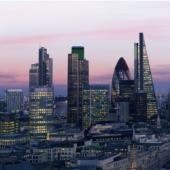Kornik: The pandemic hit cities hard, and we’ve heard a lot of dim forecasts about their future. What’s your take on the future of cities here in the United States?
Blatman: Some of the pronouncements about the death of cities are overblown—just look at the recent census numbers, which were better than expected in a lot of cities. New York, which was pronounced near dead—and not for the first time, mind you—due to the pandemic, grew by a staggering 630,000 people to reach 8.8 million, its highest number ever. The 10 largest cities all got bigger this past decade, and eight of the 10 grew at a faster rate this decade compared to the last. Philadelphia returned to over 1.6 million people and Cincinnati topped 300,000 again. As for the future, it's going to be a lot more competitive for cities, not just with each other, but particularly with other locations in and around their metropolitan areas. Cities everywhere will be fighting off the allure of suburbs as people's preferences evolve. So-called superstar cities such as San Francisco, Seattle and New York will remain attractive—just think about this fact: At a time when the media was full of stories about a mass exodus from San Francisco, the amount of venture capital invested in the city during the first half of 2021 was greater than in any of the 49 states besides California, according to a report from PitchBook Data and the National Venture Capital Association. And number two, by a large margin, was the San Francisco Peninsula, which includes Palo Alto and Silicon Valley. But alternatives are growing, too—Austin, Dallas, Nashville, Charlotte and Raleigh, among others.
Kornik: It seems to me that real estate, especially corporate real estate, will be one of the biggest keys to whether cities, specifically their central business districts, will be successful and vibrant places in the future. Do you see companies flooding back into downtown offices or do you think the work-from-home model is here to stay?
Blatman: I don't think anyone really knows what the corporate landscape will look like two or three years from now. Let's start with the premise that cities are constantly changing. Even before COVID, many central business districts had become less centers of commerce and more centers for culture and entertainment, dining/shopping, even recreation and education. Look at San Diego, which over the past 40 years has built almost an entire downtown based on tourism and entertainment that is also now home to over 40,000 people. Most business is transacted on the north side of the city and beyond, not downtown. The majority of law firms and every big accounting firm, including Protiviti, has their offices north of the city center. But now, another use is about to enter the mix—due to the availability of land and willing developers in a hot regional market, downtown San Diego is poised to become a major bioscience center. As for downtown offices, I think it depends on the company. We've seen companies remain committed to urban locations—just look at the huge commitments made by big tech companies like Google, Amazon, Facebook, Apple and also Disney to New York during the pandemic and to places such as Austin, Nashville and Chicago. We've also seen some companies say they don't need a HQ and can operate virtually from anywhere with management and employees decentralized. We really don't know what will happen right now because with the resurgence of variants a lot of office re-openings are being delayed to 2022.
Kornik: The video focuses on San Francisco, but really Any City, USA is in the same situation when it comes to empty office buildings in downtown. What can cities do, if anything, to make sure their business districts do come back?
Blatman: The big issue is not the vacancy rate for space but the occupancy rate of employees. If companies continue with a two to three days a week in the office model, that's 40% to 60% fewer people on the streets every week, which could have a devastating effect on all the small businesses that make up a city's economic ecosystem. How do restaurants, service businesses and even retailers survive this? How about the effect on mass transit systems? The hope is that enough companies are growing so their offices may be filled five days a week but with a lot more individuals using the same space. As for what cities can do, cities need to take care of things cities are supposed to do—make sure their streets are clean and safe, services are predictable, and access is as frictionless as possible. To be successful, cities will have to be places where people want to live and not just work or play. They are also going to have to redouble their efforts to offer amenities that aren't found elsewhere in a region such as public events, cultural offerings and dining/shopping/entertainment options. Will cities come back? History says yes. People and ideas have always congregated in cities; people are social animals. But the key will be making sure cities offer a good quality of life since alternatives are now more prevalent.


































